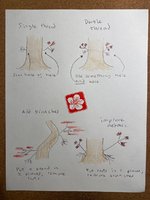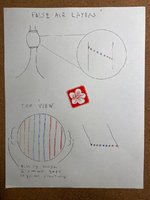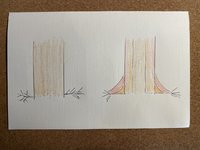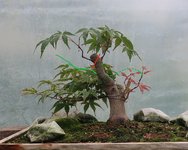Sure! Sorry I don't draw well, but I tried to sketch something fo you quickly with my sunday morning coffee
 First attachment - 'Double Thread' Grafts
First attachment - 'Double Thread' Grafts
Top 2 pictures: the concept
Bottom 2 pictures: examples for application
Top left: 'single thread' (standard approach)
Top Right: 'double thread' (my teacher's approach, when appropriate for the situation)
Bottom left: adding 2 branches via thread graft, with each branch concealing the entry point of the other thread graft
Bottom right: adding sets of 2 roots via thread graft, with each set of roots concealing the exit point of the other thread graft
Second attachment - 'False Air Layers'
This 'double thread' technique is what I have been playing with for 'false air layers' (with 3 holes you add 6 set of roots, etc). I have succeeded a few with Acer Palmatum where I was testing the functionality with no real concern for aesthetics. I am now in the process of experimenting with the aesthetics. I hope to be able to share a full report in 2022.
In this sketch I am trying to illustrate the core concept. It should be enough to get your brain going, but the execution can get quite sophisticated in difference scenarios and for different purposes. The obvious improvement would be with the placement/angle of the holes being drilled. Other areas for improvement are less obvious and require more creativity. It may help to speak with an electrician about 'fishing' techniques

The number of holes will vary, but in this example with 9 holes you get 18 sets of roots.
I want to be very clear here: I brought this up because it is an example of the success of root grafts via thread grafting. I don't recommend 'false air layers' as a go-to solution or replacement for standard air layers. It requires a lot of unnecessary thinking and precision in execution, and the number of holes being drilled through a trunk in such close proximity can be risky and does damage to the tree (although i luckily have seen no consequence of this damage as of yet). I'm doing this
entirely for fun.




















